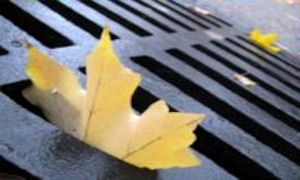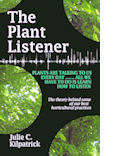50 Things you can compost
For those of us who want to do as little work as possible, then composting in a cold system is about as easy as it gets. It's all about knowing the right things to put in.
What is a cold composting system?
A cold composting system is what most of us have. You might have a purpose-made compost bin or a pile at the bottom of the garden but if you have a compost bin that is less than one metre cubed in size, if you add items a little at a time and if you rarely turn your compost, then you have a cold system.
Cold composting systems never reach the high temperatures required to kill off pathogens and weed seeds so there are a number of things you should keep out of your bin. As a general rule, you shouldn't put in diseased plants, cooked food, meat, fish or dairy nor perennial weed roots or weeds with seeds.
 What's all this about greens and browns
What's all this about greens and browns
If you're new to composting, you may have been told you need a fifty-fifty mix of greens to browns. (Greens are nitrogen-rich and tend to be wetter, browns are carbon-rich and tend to be drier). This is true but all this talk of greens and browns is complicating the issue. All you really need to know is that you should have a good mix of materials in your compost bin. Put allowable wet and dry household and garden waste into your bin as and when they become available and you'll find you get pretty close to the fifty-fifty ratio without even having to try.
Here's a list of things you can put in your compost bin and for those of you who really need to know, we've colour-coded them according to whether they are predominantly green or brown or even both - green and brown.
|
1. Grass clippings
|
|
Good source of nitrogen, don't use straight after applying lawn treatments.
|
|
2. Shredded paper
|
|
Good to mix with grass clippings if you can be bothered. If not, just add when available.
|
|
3. Vacuum cleaner contents
|
|
4. Annual weeds without seeds
|
|
5. Pet and human hair
|
|
In moderation when cleaning your brushes.
|
|
6. Tea bags and tea leaves
|
|
7. Vegetable peelings
|
|
8. Junk mail
|
|
Scrunch it up loosely to trap air.
|
|
9. Cooked sweetcorn cobs
|
|
Although cooked, these are okay - very slow to rot down.
|
|
10. Pond debris
|
|
11. Floor sweepings
|
|
12. Cereal packets
|
|
Leave these whole, there's air inside and compost bins love air!
|
|
13. Fruit peelings
|
|
14. Wooden barbeque skewers
|
|
15. Houseplants with potting compost
|
|
16. Egg boxes
|
|
Leave these whole, there's air inside.
|
|
17. Poisonous plants
|
|
Things like potato haulms and rhubarb leaves are fine.
|
|
18. Feathers
|
|
19. Used kitchen roll
|
|
As long as you haven't been using anti-bacterial spray. Compost needs bacteria!
|
|
20. Banana peel
|
|
Lots of people think you can't!
|
|
21. Fluff from tumble driers
|
|
22. Old bedding plants
|
|
23. Pencil sharpenings
|
|
24. Woody prunings
|
|
Shred them or cut them up really small.
|
|
25. Nail clippings
|
Gross but true.
|
26. Egg shells
|
|
Neither green nor brown but they will leach calcium to your plants.
|
|
27. Used tissues
|
|
28. Apple cores
|
|
You won't kill the seeds but nobody minds a few apple trees.
|
|
|
|
|
29. Seaweed
|
|
30. Dead-headings
|
|
31. Envelopes
|
|
Take out the plastic windows and scrunch them up to trap air.
|
|
32. Cardboard packaging
|
|
33. Urine
|
|
Great compost activator.
|
|
34. Wooden toothpicks
|
|
35. Old cut flowers
|
|
36. Pet bedding
|
|
If your pet's a vegetarian, put droppings and natural-fibre bedding in.
|
|
37. Toilet and kitchen roll tubes
|
|
Leave them whole, there's air inside.
|
|
38. Potato peelings
|
|
Could spread potato blight but unlikely. Leave out if you're concerned.
|
|
39. Evergreen prunings
|
|
40. Natural fibre clothing
|
|
Best put over the compost heap in winter and left to rot down. Use in moderation.
|
|
41. Coffee grounds
|
|
42. Orange peel
|
|
Too acidic for wormeries but okay for ordinary compost bins.
|
|
43. Till receipts
|
|
44. Paper bags
|
|
45. Leftover salad
|
|
Even with a dressing on it, it's okay.
|
|
46. Hay
|
|
47. Straw
|
|
48. Fallen leaves
|
|
Strictly speaking you should compost these separately to make leafmold but you can use in moderation if you're short of browns.
|
|
49. Sawdust
|
50. Horse manure
|
|
Almost perfect mix of green and brown.
|
|
Julie is a lecturer in horticulture, editor of Gardenzine and author of The Plant Listener.










